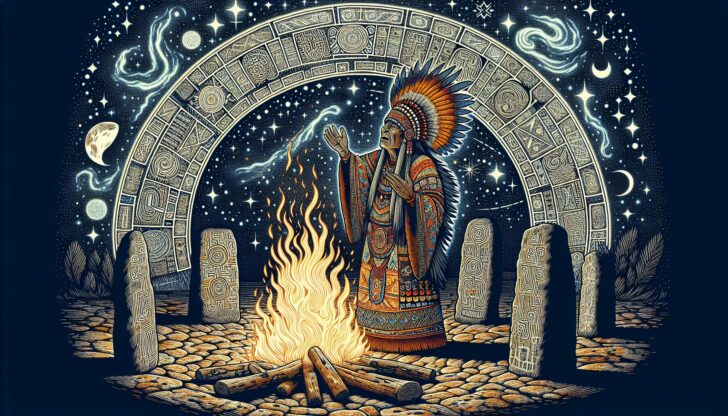When asking ‘how many faiths are there,’ one might be surprised. Estimates suggest there are between 4,000 to 10,000 distinct religions worldwide. These range from widely recognized major world religions to countless local and indigenous traditions. This article will explore the diversity of global religions, providing insights into major religions and lesser-known faiths alike.
Table of Contents
Key Takeaways
Estimating the number of religions globally is complex, with estimates ranging from 4,000 to 10,000 distinct faiths, reflecting the vast diversity of spiritual beliefs and practices worldwide.
Major world religions, including Christianity, Islam, Hinduism, and Buddhism, have significant global followings and deeply influence cultural and religious landscapes.
Religious demographics and growth vary globally, with Islam cited as the fastest-growing major religion due to higher fertility rates, and the distribution of religions such as Christianity and Islam differing significantly across regions.
Defining Faith and Religion
The task of defining religion has puzzled scholars for centuries as there is no scholarly consensus on a precise definition. A religion is essentially defined by:
the beliefs and ideas that an individual considers to be sacred and worthy of devotion
the concept of what is deemed holy and true within a person’s spiritual framework
the values individuals hold based on what their religion teaches
Religion is more than just belief in a higher power; it encompasses social-cultural systems that include behaviors, practices, morals, religious beliefs, worldviews, texts, sanctified places, prophecies, ethics, or organizations. Common elements found in most religions include the divine, sacredness, faith, and sometimes supernatural beings. Religious practices may involve rituals, sermons, sacrifices, festivals, feasts, trances, initiations, meditation, and prayer.
Sacred histories, narratives, and mythologies are also integral to religions, often preserved in:
oral traditions
texts
symbols
holy places
These elements create a rich tapestry of beliefs and practices that have shaped human history and continue to influence contemporary society.
Estimating the Number of Faiths Globally

The complexity of estimating how many religions exist worldwide stems from factors like religious switching, which refers to individuals changing their religious affiliations, and the presence of numerous small, indigenous religions that make compiling an exhaustive list a challenge. Despite these difficulties, estimates suggest there are between 4,000 and 10,000 recognizable religions, faith groups, and denominations globally.
This vast number reflects the incredible diversity of religious or spiritual beliefs practiced across the world. While major religious groups dominate the headlines, countless other religions play significant roles in the lives of communities around the world. This diversity underscores the rich mosaic of faiths that contribute to the spiritual landscape of our global population.
Major World Religions
Out of the thousands of religions, a few major widely recognized world religions have a significant global presence, impacting a large portion of the world’s population. Christianity stands out as the world’s largest religion with approximately 2.38 billion followers, followed by Islam, which was established in the 7th century and counts around 1.8 billion adherents.
Hinduism, often cited as the oldest religion, encompasses about 15% of the global population, with approximately 1.25 billion followers. Buddhism, with its profound philosophical teachings, has around 520 million adherents worldwide. Sikhism, though smaller with around 30 million followers, plays a significant role, especially in Punjab, where it was founded in the 15th century.
Judaism, one of the major religions recognized globally, has a rich history and cultural influence despite its relatively smaller population. These major religions, with their unique beliefs and practices, form the backbone of the world’s religious landscape.
Abrahamic Religions
Judaism, Christianity, and Islam, collectively known as the Abrahamic religions, share a common lineage that traces back to the prophet Abraham. These religions originated with the ancient Israelites, who worshiped Yahweh, and evolved into distinct faiths over time. Christianity emerged as a sect of Judaism in the 1st century CE, while Islam began in the early 7th century CE.
Despite their differences, the Abrahamic religions share several foundational stories, including the creation in the Garden of Eden, the Flood and Noah’s Ark, and the Ten Commandments. Monotheism, the belief in one God, is a central tenet of all three religions. In Judaism, God is called Yahweh; in Christianity, God is simply called God; and in Islam, God is referred to as Allah.
The concept of prophets is also significant in these religions. Prophets served as messengers of God, with Jesus being regarded as a prophet in Islam, though not considered divine, unlike in Christianity, where he is seen as the Son of God and the Messiah. This shared lineage and common beliefs illustrate the deep connections between these major religious groups.
Dharmic Religions
Originating in the Indian subcontinent, the Dharmic or Indian religions include:
Hinduism
Buddhism
Jainism
Sikhism
These religions share a focus on dharma, which encompasses duties, rights, laws, conduct, virtues, and the right way of living.
Hinduism, the oldest of the Dharmic religions, includes a vast array of practices and beliefs centered around concepts like karma, dharma, and moksha. Buddhism, which emerged from the Shramana movement around 800-200 BCE, focuses on the teachings of Siddhartha Gautama, the Buddha, who taught the path to enlightenment.
Jainism, another product of the Shramana movement, emphasizes non-violence and asceticism. Sikhism, founded in the 15th century, stresses the worship of one God and the teachings of Guru Nanak and his nine successors. These religions, with their rich philosophies and spiritual practices, have profoundly influenced the cultures of the Indian subcontinent and beyond.
East Asian Religions
Confucianism, Taoism, and Buddhism, known as East Asian religions, have deep roots anchored in ancient Chinese and Japanese philosophies. Confucianism, founded by Confucius, became the dominant political philosophy during the Han Dynasty and has significantly shaped Chinese society and governance.
Taoism, developed around two thousand years ago, focuses on the spiritual elements of life and the nature of the universe. The guiding principle of Taoism is ‘the Way,’ representing a harmonious natural order between humans and the world. This philosophy has influenced various aspects of Chinese culture, including traditional medicine.
Chinese traditional religion, which includes elements of Confucianism, Taoism, and Buddhism, has seen a resurgence, with current estimates suggesting around 950 million adherents. These East Asian religions, along with Chinese folk religions, with their unique philosophies and practices, continue to play a vital role in the spiritual lives of millions.
Folk and Indigenous Religions

Specific ethnicities or tribes are closely linked to folk religions and indigenous religions, which often involve practices like animism and ancestor worship. These ethnic or cultural practices exist outside the theological doctrines of organized religions and are sometimes referred to as African traditional religions. Approximately 430 million people practice a folk religion, making up about 6% of the global population.
These religions are characterized by:
Their deep connection to the local environment and community
Their incorporation of rituals intended to appease spirits or deities
Their transmission through oral traditions
This profound link to the natural world and ancestral heritage provides a unique perspective on spiritual beliefs and practices.
African and Australian Aboriginal Religions
Emphasizing the unity between humanity and nature, African and Australian Aboriginal religions assign significant roles to rituals and ceremonies. Australian Aboriginal spirituality is deeply connected to the Dreaming, which represents ancient creation events by ancestral beings and provides a blueprint for life.
Totemic beliefs in these cultures link individuals and groups to natural elements and spiritual entities, reinforcing personal identity and connecting them to a broader spiritual framework. Rituals often involve:
large gatherings tied to local food resources
dramatic performances
dance
chanting
These practices highlight the rich cultural heritage and spiritual depth of these indigenous religions.
The Rise of New Religious Movements
Offering innovative religious responses to modern conditions, New religious movements (NRMs) are often perceived as countercultural alternatives to mainstream religions. These movements are frequently founded by charismatic leaders believed to possess extraordinary powers or insights.
NRMs tend to be tightly organized and often demand high levels of loyalty and commitment from their followers. The New Age movement, which arose in the 1970s and ‘80s, is an eclectic mix of beliefs and practices aiming for individual transformation. Some NRMs, like the Peoples Temple and the Branch Davidians, have had tragic outcomes, highlighting the potential dangers of certain apocalyptic beliefs.
Learn more, visit New religious movement (NRM) | Definition, Types, & Facts.
Unaffiliated and Secular Beliefs
About 16% of the global population, which includes atheists, agnostics, and those not identifying with any particular religion, is religiously unaffiliated. This group, often referred to as the “nones,” generally holds ambivalent views about the role of religious organizations in society.
The majority of the population with no religious affiliation lives in the Asia-Pacific region, with 700 million in China alone. They attend worship services less frequently and are less likely to believe in God compared to the general public. This growing demographic is reshaping the religious landscape in many countries, particularly in the United States.
The Fastest-Growing Religions
Factors like high fertility rates, religious conversion, and geographic distribution influence the fastest-growing religions, such as Islam and Pentecostalism. Islam is often cited as the fastest-growing major religion in the world, largely due to a younger average age and higher fertility rates.
Pentecostalism, a Protestant Christian movement, is also experiencing rapid growth primarily due to religious conversion. Other religions, like Buddhism and Hinduism, are also growing in certain countries, reflecting the dynamic nature of religious demographics worldwide.
Geographic Distribution of Faiths
The geographic distribution of faiths varies significantly. Here are some key points:
Christians are the most evenly dispersed major religious group.
Nearly equal numbers of Christians are found in Europe, Latin America and the Caribbean, and sub-Saharan Africa.
This even distribution is expected to continue, with the number of Christians in sub-Saharan Africa projected to more than double by 2050.
In contrast, other religious groups are more concentrated. Most of the world’s Muslims are in the Asia-Pacific region, while the vast majority of Hindus, Buddhists, and adherents of folk or traditional religions are also found in this region.
A significant portion of Jews live in North America and the Middle East, mainly in Israel.
Living as Majorities and Minorities
The experiences and dynamics of religious groups are profoundly impacted by whether they live as religious majorities or minorities. Surprisingly, 27% of the world’s population lives as religious minorities, which can significantly shape their social and political environments. For instance, most Christians live in countries where they are the majority, providing them with a sense of cultural and societal dominance.
On the other hand, many Buddhists, Jews, and other smaller religious groups often find themselves as minorities. For example, Israel is the only country with a Jewish majority, which deeply influences its national policies and cultural identity. These dynamics highlight the varying experiences of religious groups depending on their majority or minority status.
Summary
The exploration of global faiths reveals a rich tapestry of beliefs and practices that have significantly shaped human history and continue to influence contemporary society. From the major world religions like Christianity, Islam, Hinduism, Buddhism, and Judaism to the deeply rooted traditions of folk and indigenous religions, each faith contributes uniquely to our global culture.
Understanding the geographic distribution, growth trends, and minority-majority dynamics of these religions provides valuable insights into the complexities of global spiritual beliefs. As we embrace this diversity, it becomes clear that religion, in all its forms, plays a critical role in shaping our world. Let this knowledge inspire a deeper appreciation for the vast array of faiths that enrich our shared human experience.
Frequently Asked Questions
How many faiths are there worldwide?
There are an estimated 4,000 to 10,000 recognizable religions, faith groups, and denominations worldwide.
What are the major world religions?
The major world religions are Christianity, Islam, Hinduism, Buddhism, and Judaism. These are some of the most widely practiced religions globally.
Which is the fastest-growing religion?
Islam is often considered the fastest-growing major religion due to higher fertility rates and a younger average age.
What percentage of the global population is religiously unaffiliated?
Roughly 16% of the world’s population is not affiliated with any religion, including atheists, agnostics, and those not identifying with any particular religion.
Where are most of the world’s Hindus located?
Most of the world’s Hindus are located in the Asia-Pacific region, where about 99% of them reside.









